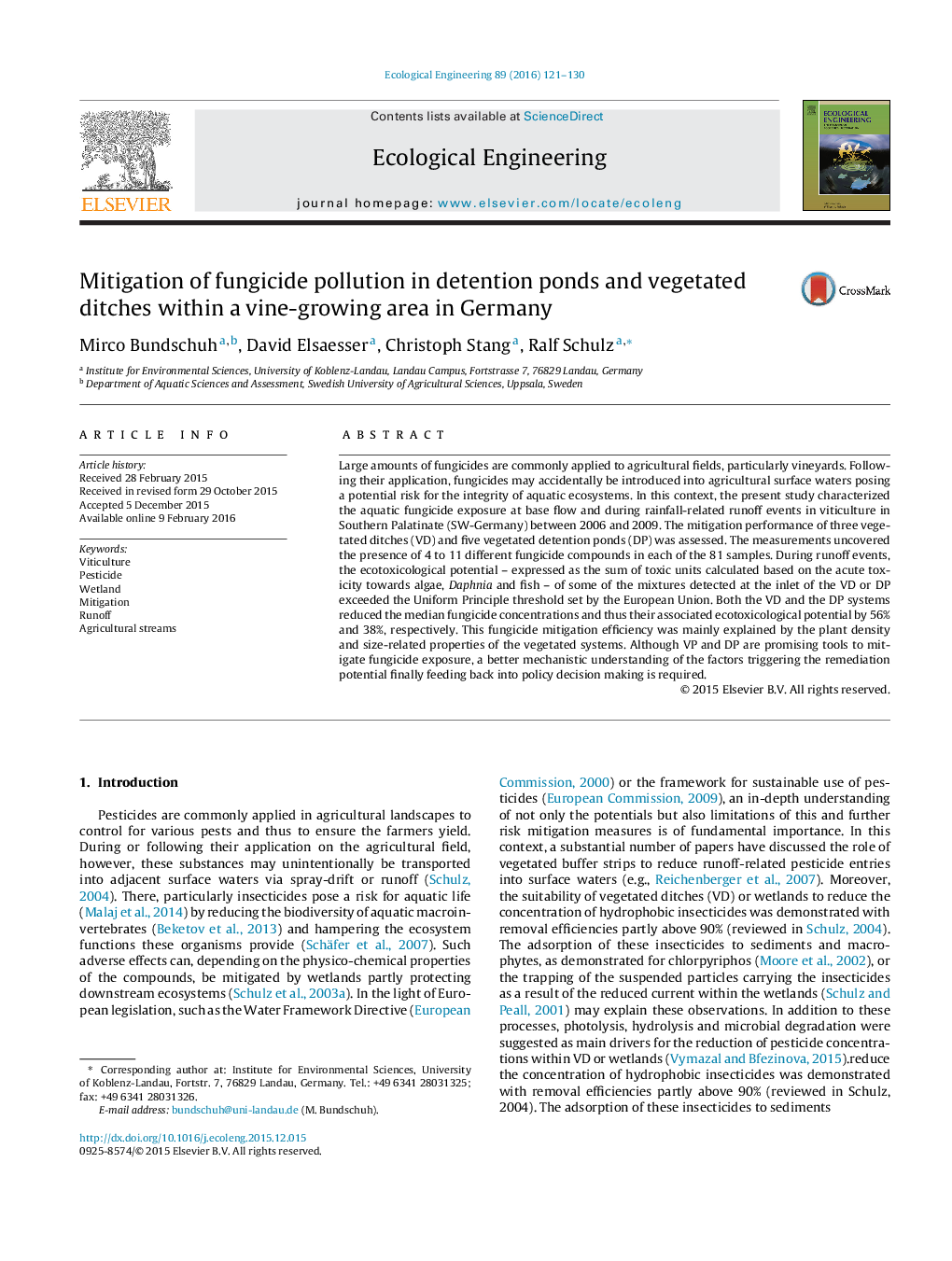| Article ID | Journal | Published Year | Pages | File Type |
|---|---|---|---|---|
| 4388754 | Ecological Engineering | 2016 | 10 Pages |
•Fungicides exhibit a substantial ecotoxicological potential during run-off events.•Vegetated systems reduce fungicide peak concentration in agricultural landscapes.•Plant density and size-related parameters trigger remediation by vegetated systems.
Large amounts of fungicides are commonly applied to agricultural fields, particularly vineyards. Following their application, fungicides may accidentally be introduced into agricultural surface waters posing a potential risk for the integrity of aquatic ecosystems. In this context, the present study characterized the aquatic fungicide exposure at base flow and during rainfall-related runoff events in viticulture in Southern Palatinate (SW-Germany) between 2006 and 2009. The mitigation performance of three vegetated ditches (VD) and five vegetated detention ponds (DP) was assessed. The measurements uncovered the presence of 4 to 11 different fungicide compounds in each of the 81 samples. During runoff events, the ecotoxicological potential – expressed as the sum of toxic units calculated based on the acute toxicity towards algae, Daphnia and fish – of some of the mixtures detected at the inlet of the VD or DP exceeded the Uniform Principle threshold set by the European Union. Both the VD and the DP systems reduced the median fungicide concentrations and thus their associated ecotoxicological potential by 56% and 38%, respectively. This fungicide mitigation efficiency was mainly explained by the plant density and size-related properties of the vegetated systems. Although VP and DP are promising tools to mitigate fungicide exposure, a better mechanistic understanding of the factors triggering the remediation potential finally feeding back into policy decision making is required.
